Recently, I discovered that FedNav- the main shipping line that is the reason that Group Ocean (my employer) is in Hamilton- refers to many of their ships as “Ocean Going Lakers”. These are ships that are – to my eye- Salties. What is a salty you ask? Well, on the Great Lakes, that is the term used to refer to ships from overseas- or specifically- outside the St Lawrence Seaway. This differentiates them from Lakers- the ships that are designed for the Lakes specifically (Although, now often built overseas). In this Blog, we’re going to take some of the photos I’ve taken over the past three seasons to talk about some of the aspects of Salties and Lakers (and Ocean-Going Lakers) that differentiate them.
First, let’s talk about similarities: All of these ships are Bulkers, which means they carry bulk or breakbulk cargo. Bulk cargo includes things like coal and wheat, breakbulk means individually packaged, so things like rolls of steel.
Let’s start looking at some lakers. How do we define a laker? Well designed for the Great Lakes, specifically- and for the St Lawrence Seaway. So about 750 ft long, 70 ft wide and with a draugh of about 27 feet (8m).1 Lakers are designed to load from several ports, so have a lot of smaller hatches, rather than the smaller number of larger hatches found on international freighters. Some, but not all lakers have self-unloading devices. The one pictured here (the Tim S Dool , I believe), does not have a self-unloader, but many do. Here you can see the device that is used to lift the hatch covers, and move them to positions fore and aft where they are stacked for storage when loading/unloading. 
You can see here that the Dool was rebuilt, and widened below the bulwarks- notice the distinct tumblehome. This is fairly common on older lakers like the Dool– older, as in 1970s. There are yet older still Lakers that have a much more distinctive style, with deckhouses fore and aft. They are very rare, now. In this video below, you can see the device that removes the hatches moving, and some details of the hatch covers.
This photo above shows one of the oldest Lakers still remaining in service – the John D Leitch which like the Dool is owned by Algoma. This is absolutely classic- abrupt deckhouse up forward- with accomodations- self unloader amidships, and then another deckhouse with the engineering spaces aft. In this case, we had the Leitch under tow as she had suffered an engine issue on the first run of the season- didn’t even make it to Port Weller (from Hamilton). However, it was repaired and put back in service.
These photos are of the Ojibway, another of the very rare classic lakers, this one owned by Lower Lakes (which has a few). You can see the arrangement of the hatches, and the distinctive counter stern (no longer used on modern freighters)
This is what a “modern” Laker looks like- a Equinox Class ship. In this case the G3 Marquis, built for the former Canadian Wheat Board and now run by Algoma- it is an Equinox class ship and was built in China then sailed to the Great Lakes. Here she is in winter layup, in January 2021. As you can see, it retains the many-hatch layout of classic Lakers, but the bow and deckhouse arrangements are much more like Salties than classic lakers. The G3 Marquis does not have a self-unloader- although other Equinox class ships such as the Algoma Innovator do (in that case, forward-pivot). The bow itself, like that of the Leith and the Ojibway is very up and down, to better fit in a lock.
Now, salties.
Here we have photos of two true salties- the Taagborg and Vancouverborg both owned by Wagenborg. The latter especially is a smaller Saltie- but you can see some of the distinguishing features. Cranes, not self-unloaders. Prominent bulbous bows, serious bow flare (to push aside the water)- and sometimes, covered over foc’sle to protect the crew/equipment from spray/ice. Though interestingly, the Vancouverborg has hatch cover arrangment more like Lakers than salties. 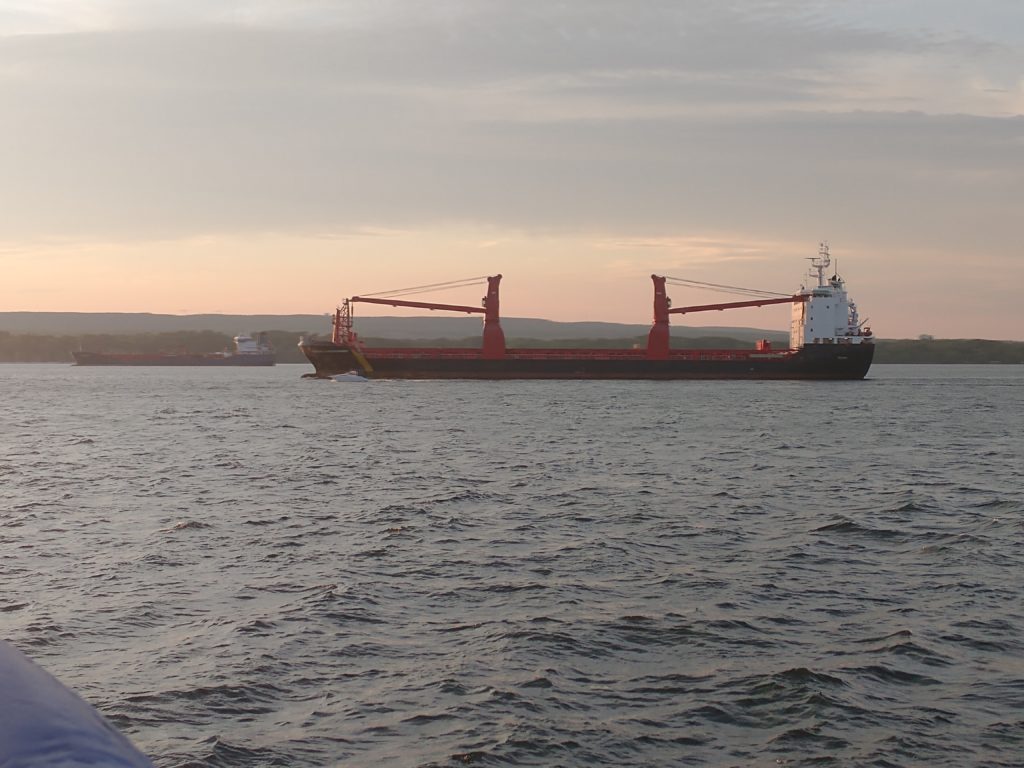
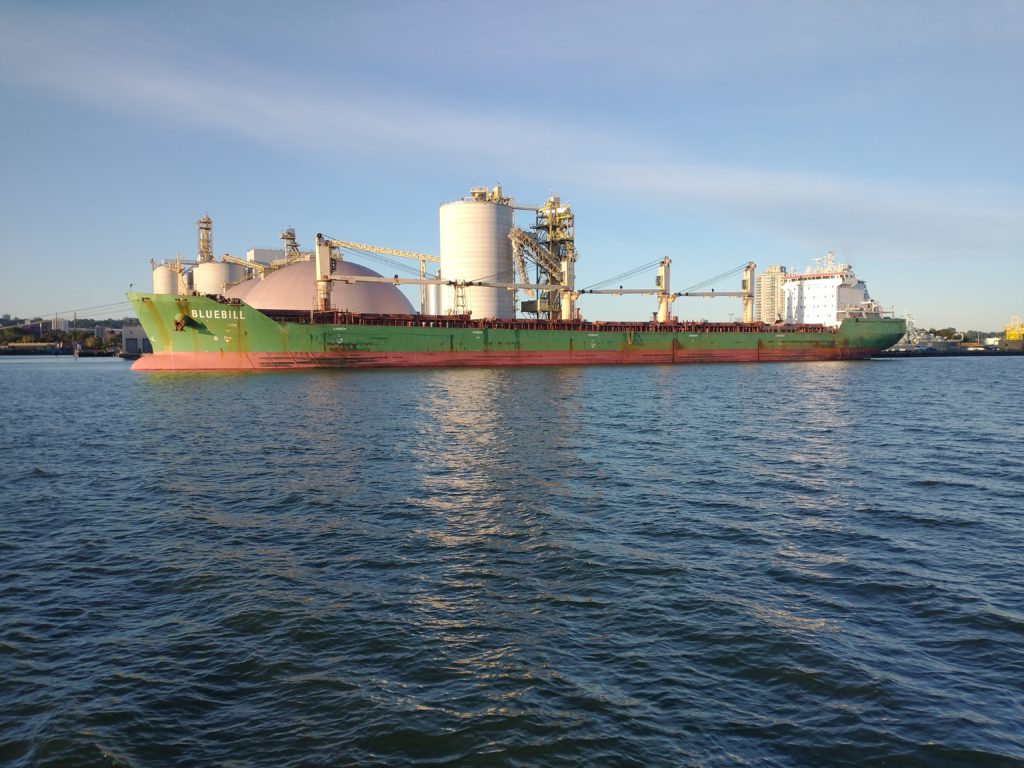
Here we have two more ships- one owned by Desgagnés, and one owned by CanForNav- both Canadian companies. Here again we see- cranes, and fewer hatches. Raised Foc’sle, single deckhouse accomodations aft.
Which brings us to the “Ocean Going Lakers” which, as far as I can tell, seems to be a term only used by FedNav. However, it seems to describe much of their fleet well. They are, in way ways- salties. Foreign registered, foreign crewed, but spend much of their time in the Great Lakes, only rarely leaving the St Lawrence Seaway.
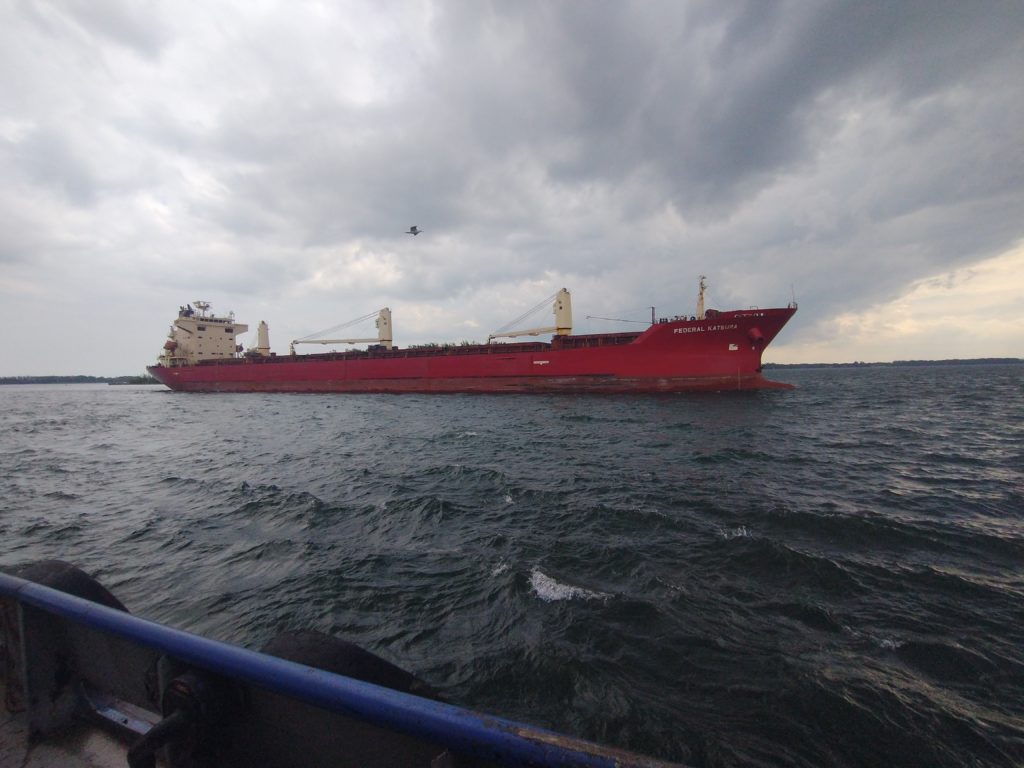
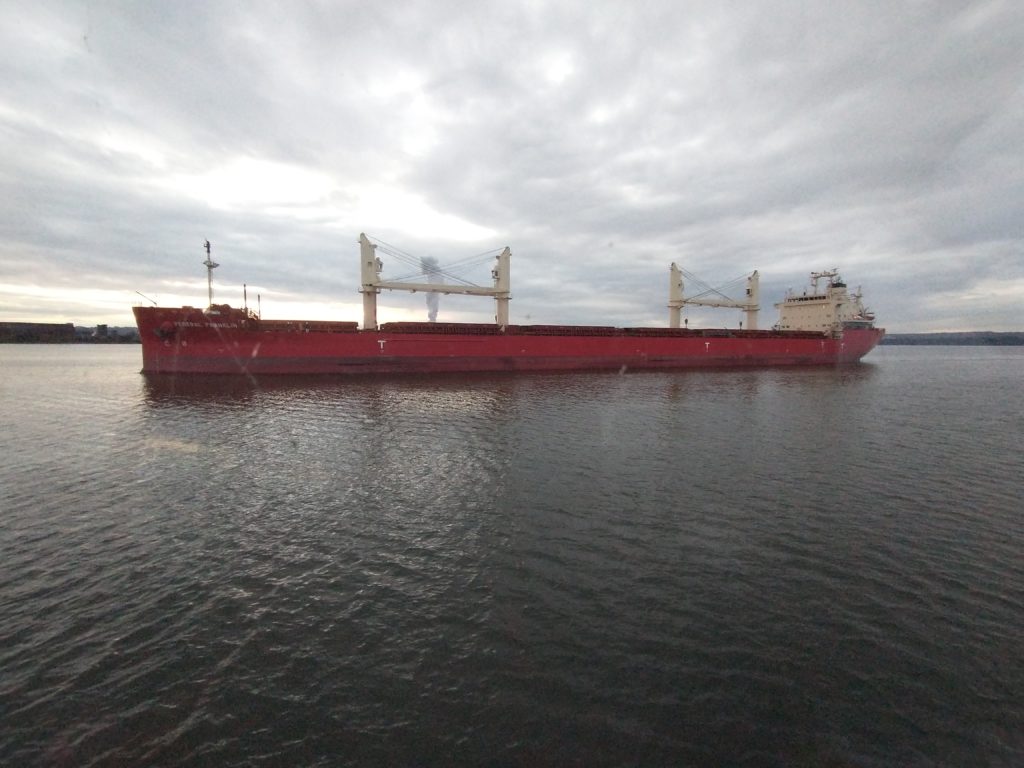
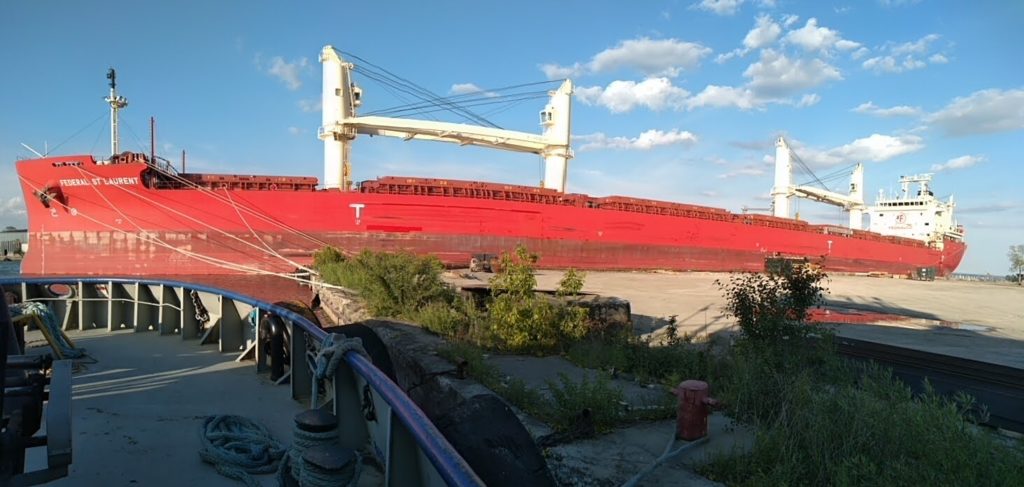 Here we have a select of FedNav ships. The Federal Katsura, top, is a classic salty, and one of several FedNav owns/leases. The Federal St Laurent and Federal Franklin are both “Ocean Going Lakers” and infact the Federal Franklin is one of the newest ships in the fleet- new in 2021. These photos provide a pretty good way to showcase the differences- most of which are happening at the bow. On deck and at the stern, the “Ocean Going Lakers” are nearly indistinguishable from Salties. It’s only at the bow- where they have a much reduced- actually neglible bulbous bow- where they can be distinguished from their Salty cousins. In fact, “Ocean Going Lakers” have far more in common with Salties than they do with even the most modern “true” Lakers.
Here we have a select of FedNav ships. The Federal Katsura, top, is a classic salty, and one of several FedNav owns/leases. The Federal St Laurent and Federal Franklin are both “Ocean Going Lakers” and infact the Federal Franklin is one of the newest ships in the fleet- new in 2021. These photos provide a pretty good way to showcase the differences- most of which are happening at the bow. On deck and at the stern, the “Ocean Going Lakers” are nearly indistinguishable from Salties. It’s only at the bow- where they have a much reduced- actually neglible bulbous bow- where they can be distinguished from their Salty cousins. In fact, “Ocean Going Lakers” have far more in common with Salties than they do with even the most modern “true” Lakers.
I very much hope you’ve enjoyed this short discussion on the different types of bulk freighters found on Lake Ontario


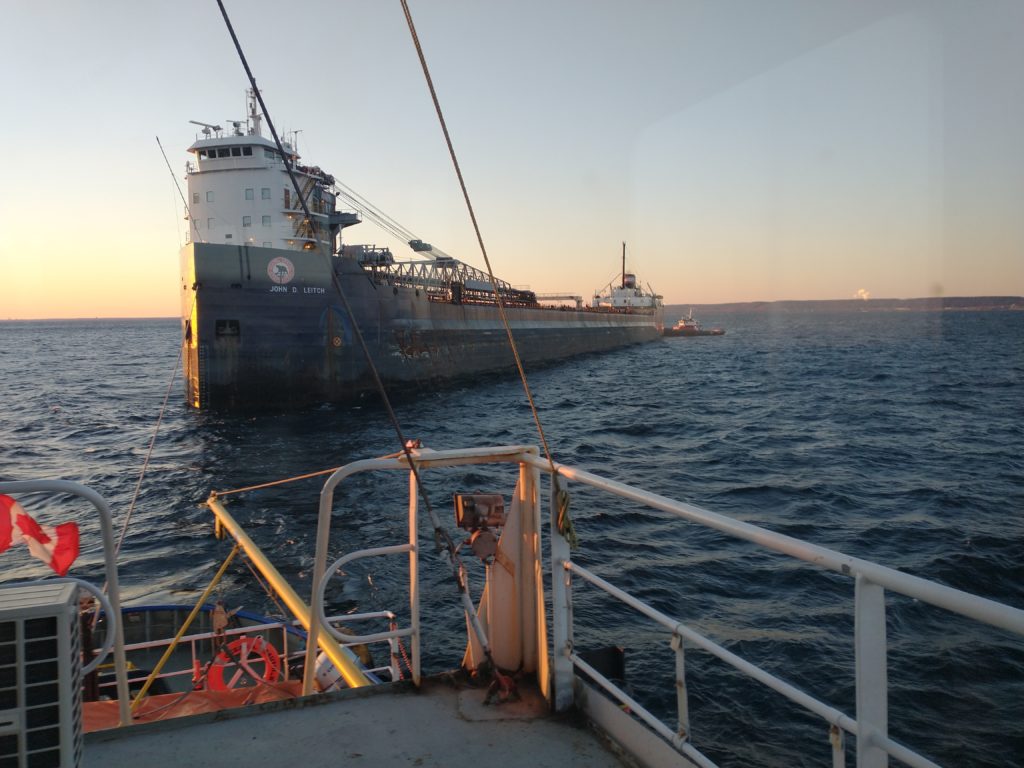

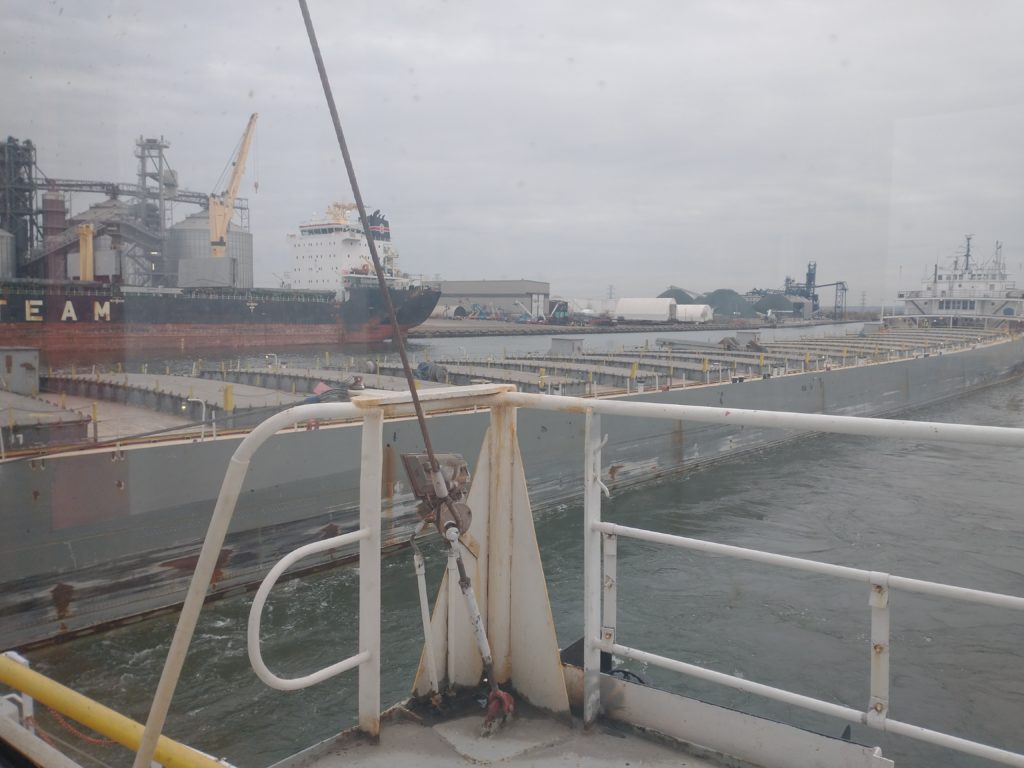


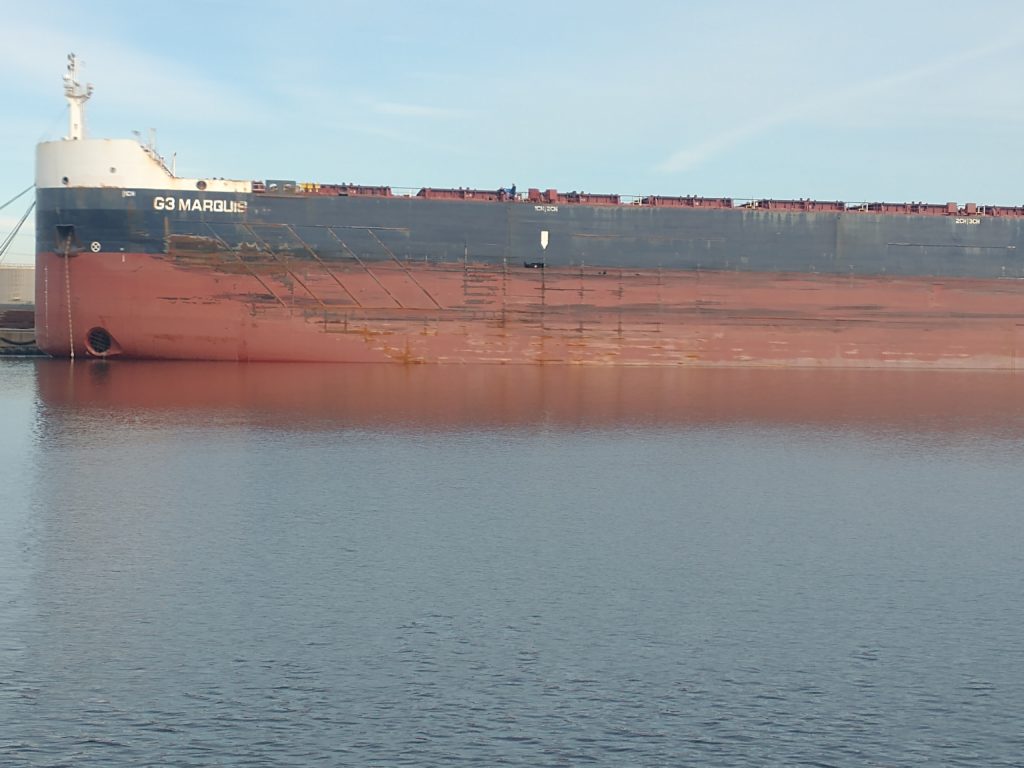
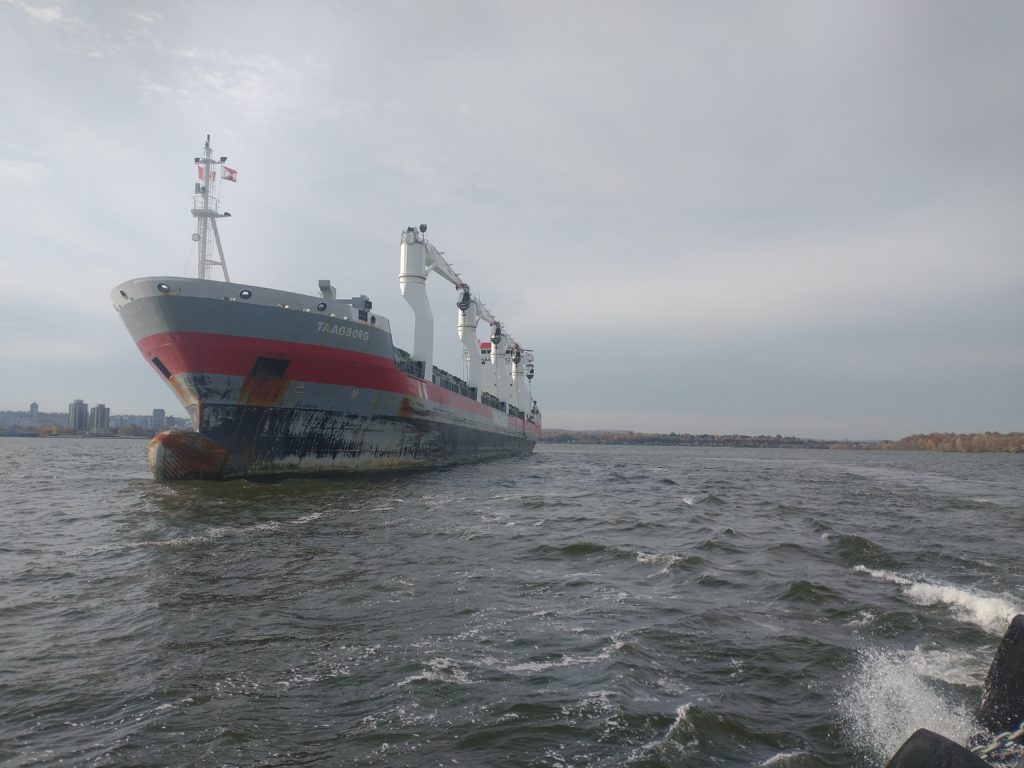







Thank you for this very helpful explanation. I worked for the Canadian grain commission as a grain weight for 20 years. I was always fascinated by the lakers and salties and self unloaders, etc. I really enjoyed your article. Very well written !